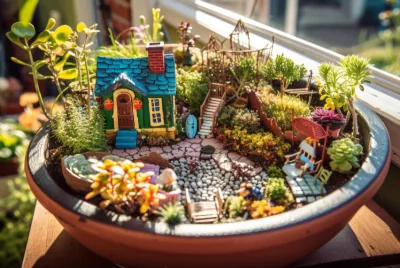Best Soil for Growing Pothos
Hello fellow plant enthusiasts! If you’ve ever marveled at the lush beauty of a Pothos, you’re not alone. These green darlings are not just plants; they’re companions that bring life to our living spaces. Today, let’s delve into one of the fundamentals of Pothos care – the soil. In this article, I’ll share my experiences and insights on the best soil for growing Pothos, along with alternative methods, creative ways to use them as decorations, and helpful suggestions.
Choosing the Best Soil for Your Pothos
Pothos are beautiful, easy-to-grow evergreen vines that can elevate your living spaces. If you dreamed of having those long vines twining through your room, it is important to provide the ideal growing conditions for these beautiful and hardy plants. One of the first steps in ensuring their thriving growth is selecting the best soil mix. Pothos, also known as Devil’s Ivy, are popular for their low maintenance and air-purifying qualities. To keep them happy and healthy, you’ll need to choose the right soil.
The Ideal Soil Mix
Pothos thrive in a well-draining soil mix that retains some moisture without becoming waterlogged. A combination of potting soil, perlite, and orchid bark in equal parts works wonders. Here are some of the reasons why this mixture will help your Pothos thrive:
- Adequate Drainage: Pothos dislike soggy roots. The perlite and orchid bark ensure excellent drainage, preventing overwatering issues.
- Moisture Retention: Potting soil helps retain the necessary moisture levels, keeping your Pothos hydrated without drowning them.
- Nutrient Availability: The mix provides a good foundation of nutrients for your plant, reducing the need for frequent fertilization.
- pH Balance: It maintains a slightly acidic to neutral pH, which Pothos prefer.
Alternative Growing Methods
While soil is the traditional medium for Pothos, there are alternative potting mediums that can you can explore to grow your Pothos in, and they make for excellent decorative items in your apartment or on your desk.
1. Growing Pothos in Water
Pothos can thrive when grown hydroponically in water. Simply place cuttings in a container with clean water, and watch the roots grow. Change the water regularly to prevent stagnation and root rot.
I grow my Potho cuttings in my freshwater aquarium! This is known as “Aquaponics”, where the waste produced from your aquarium becomes essential nutrients that support plant growth. As the plants absorb these nutrients from the water, the water is purified for the fishes. While is it possible to grow your pothos this way, it is also a method for growing vegetables above your aquarium. Check out the post on “Aquaponics 101” for more information.

2. Coco Coir Substrate
For those seeking an eco-friendly option, coco coir can be a great choice. It’s a sustainable alternative to peat moss and retains moisture well. Mix it with perlite for improved aeration.
Decorating with Pothos
Pothos not only purify the air but also add a touch of elegance to any space. Here are creative ways to use them as decorations:
- Hanging Planters: Hang Pothos in decorative planters near windows or in corners to create an attractive visual focal point.
- Terrariums: Include Pothos in your terrariums for a lush, miniature garden. Their trailing vines will add a whimsical touch.
- Green Wall: Transform a bland wall into a green oasis by arranging Pothos in wall-mounted containers. This living wall will breathe life into any room.
Tips and Tricks
- Lighting: Pothos thrive in indirect, bright light. Avoid direct sunlight, as it can scorch their leaves. Place them near a window with sheer curtains.
- Watering: Water your Pothos when the top inch of soil feels dry. Ensure proper drainage to prevent root rot.
- Fertilization: Feed your Pothos with a balanced liquid fertilizer every 2-4 weeks during the growing season (spring and summer).
- Pruning: Trim leggy or yellowing stems to encourage bushier growth. Use the cuttings for propagation.
- Repotting: Repot your Pothos every 2-3 years to refresh the soil and provide more space for growth.
I found this video to be especially useful in helping plant owners know what causes the leaves to turn yellow and brown!
Parting words
In the world of indoor gardening, Pothos plants stand out as an excellent choice for both beginners and experienced enthusiasts. To ensure their well-being, choose a soil mix that promotes good drainage and retains moisture, like a blend of potting soil, perlite, and orchid bark. However, don’t be afraid to explore alternative growing methods, such as hydroponics or coco coir. As you nurture your Pothos, remember to get creative with their decorative potential, turning your living space into a green paradise. With these suggestions and proper care, your Pothos will flourish, bringing joy and natural beauty to your surroundings.
FAQs
1. Can I use garden soil for my Pothos?
No, it’s not recommended. Garden soil can become compacted and lacks the necessary aeration and drainage Pothos require. Stick to a well-draining potting mix.
2. How often should I water my Pothos?
Water when the top inch of soil is dry. This typically means watering every 1-2 weeks, but it may vary depending on your home’s humidity and the season.
3. Can Pothos survive in low light conditions?
Yes, Pothos are known for their adaptability and can thrive in low to moderate light. Just avoid placing them in direct sunlight.
4. Are Pothos safe for pets?
While Pothos are not highly toxic, they can cause mild digestive discomfort if ingested. Keep them out of reach of pets and children.
5. How do I propagate my Pothos?
Propagation is easy. Cut a healthy stem just below a node and place it in water or soil. Roots will develop, and you’ll have a new Pothos plant in no time.





